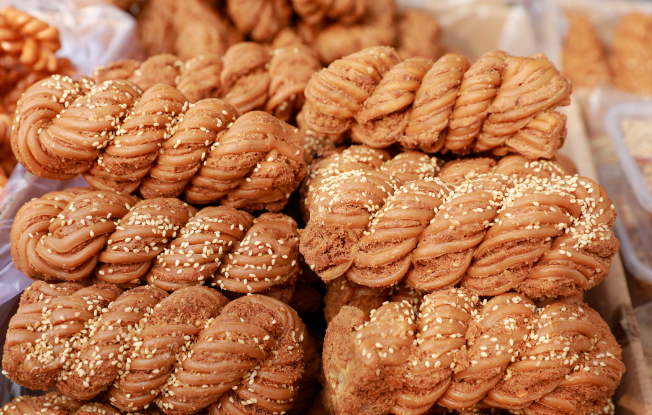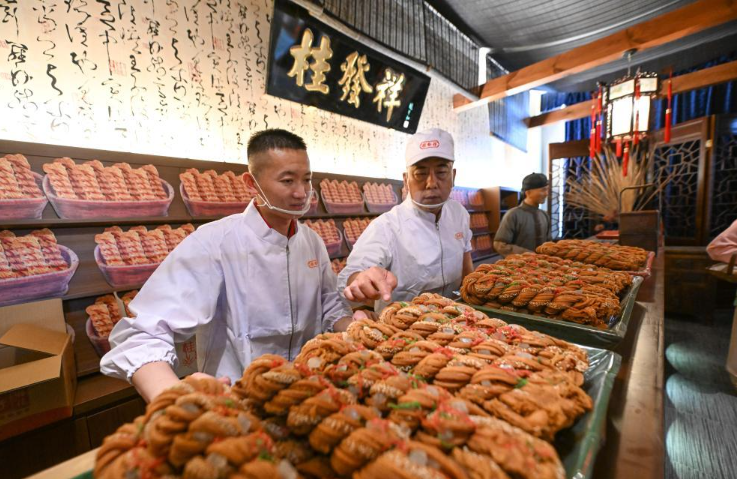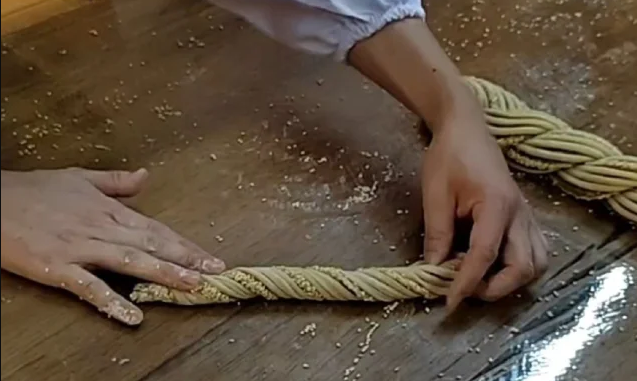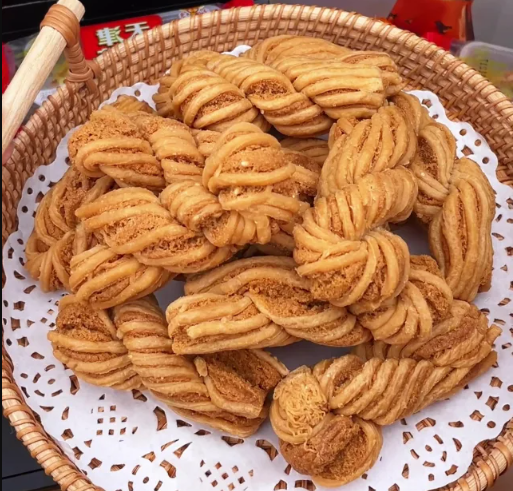Tianjin Mahua (天津麻花), or “Fried Dough Twists,” is one of China’s most iconic snacks, celebrated as one of the “Three Delicacies of Tianjin” alongside Goubuli steamed buns and Erduoyan fried rice cakes.
With a history spanning over a century, this golden-brown treat embodies traditional craftsmanship and cultural heritage, making it a must-try for visitors exploring China’s culinary landscape.
Historical Roots
Originating in the late Qing Dynasty, Mahua’s story is tied to Guifaxiang (桂发祥), a brand founded in 1927 on Tianjin’s 18th Street.
Legend credits its creation to Liu Laoba, a skilled chef who perfected the recipe by blending leavened dough, sugar syrup, and hot oil techniques. Recognized as a “China Time-Honored Brand” and listed as a National Intangible Cultural Heritage item, Guifaxiang Mahua symbolizes Tianjin’s gastronomic pride.
Artisanal Craftsmanship
The making of Mahua is a meticulous process involving over 20 steps:
1.Dough Preparation:
A blend of high-quality flour, sesame, honey, and spices is kneaded with fermented dough (mianfei) for elasticity.
2.Layering:
Thin dough strips are layered with fillings like crushed peanuts, osmanthus, candied melon, and ginger, creating a multi-textured core.
3.Twisting & Frying:
The dough is intricately twisted into shapes and fried in peanut oil until golden, achieving a crisp exterior and tender interior.
This fusion of sweet and savory flavors, coupled with its signature crunch, ensures Mahua stays fresh for up to three months—ideal for souvenirs.
Cultural Significance
Beyond its taste, Mahua reflects Tianjin’s identity. The Mahua Museum in Hexi District showcases its history and production, attracting food enthusiasts worldwide.
As a symbol of hospitality, locals gift Mahua during festivals, embodying wishes for prosperity and unity. Its inclusion in China’s intangible heritage list highlights its role in preserving traditional culinary arts.
Modern Appeal
Today, Guifaxiang’s Mahua remains a tourist favorite. International visitors, like Portuguese student Pat, marvel at its giant 1.5-meter variants and artisanal workshops where young apprentices learn from masters.
Brands like Guifaxiang and Erduoyan also innovate with flavors like chocolate and matcha, catering to global palates while honoring tradition.
Why Try Tianjin Mahua?
- Authentic Taste: A harmonious blend of sweetness, nuttiness, and spice.
- Cultural Experience: Visit the Mahua Museum or 18th Street shops to witness its creation.
- Souvenir Choice: Lightweight, long-lasting, and beautifully packaged.
Conclusion
Tianjin Mahua is more than a snack—it’s a bite of history. Whether enjoyed fresh from a street vendor or packed as a gift, it offers a delicious gateway to China’s rich culinary traditions. For travelers craving authenticity, Mahua is a crispy testament to Tianjin’s enduring flavor.




















No comments yet